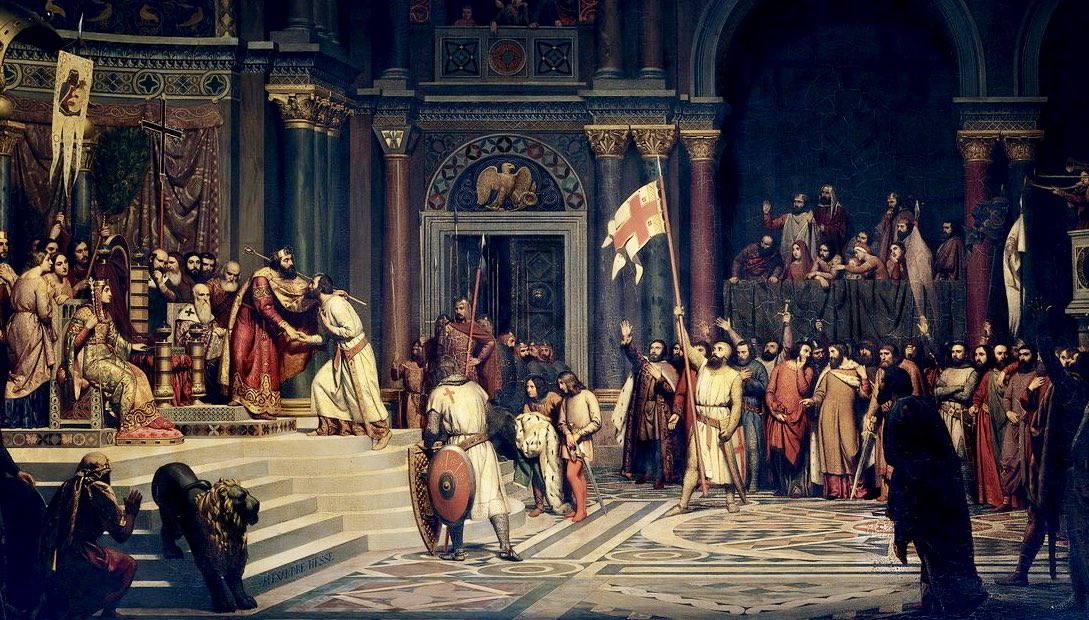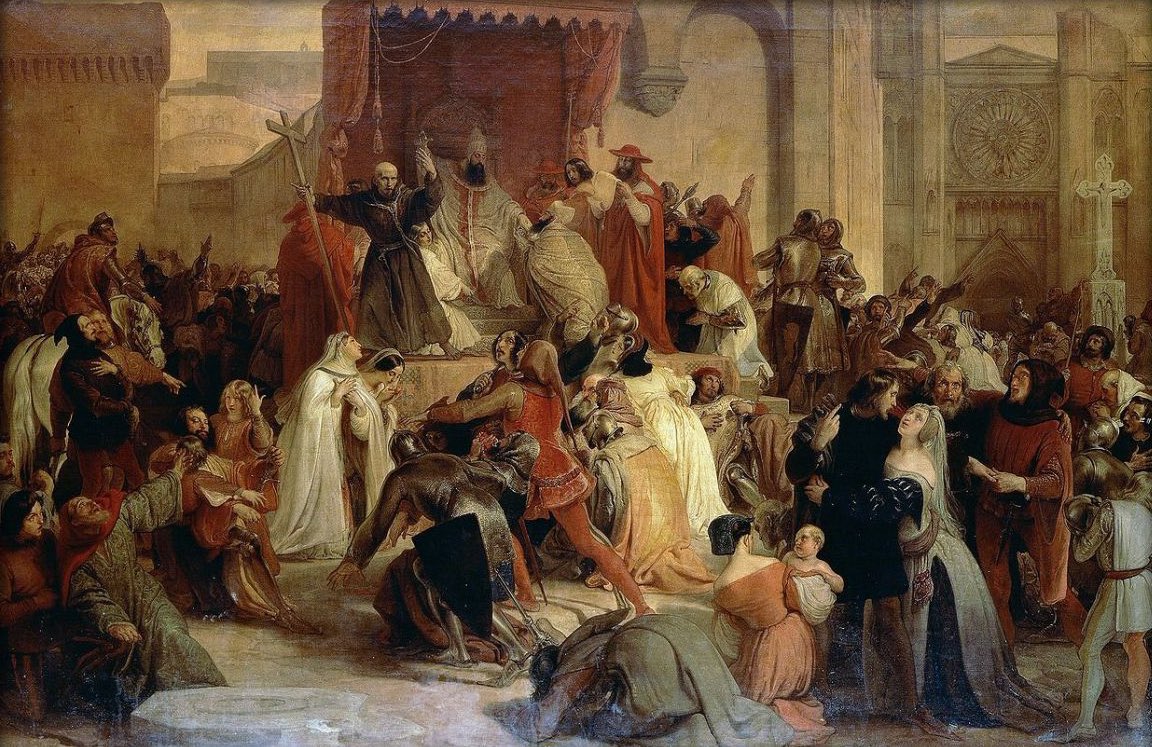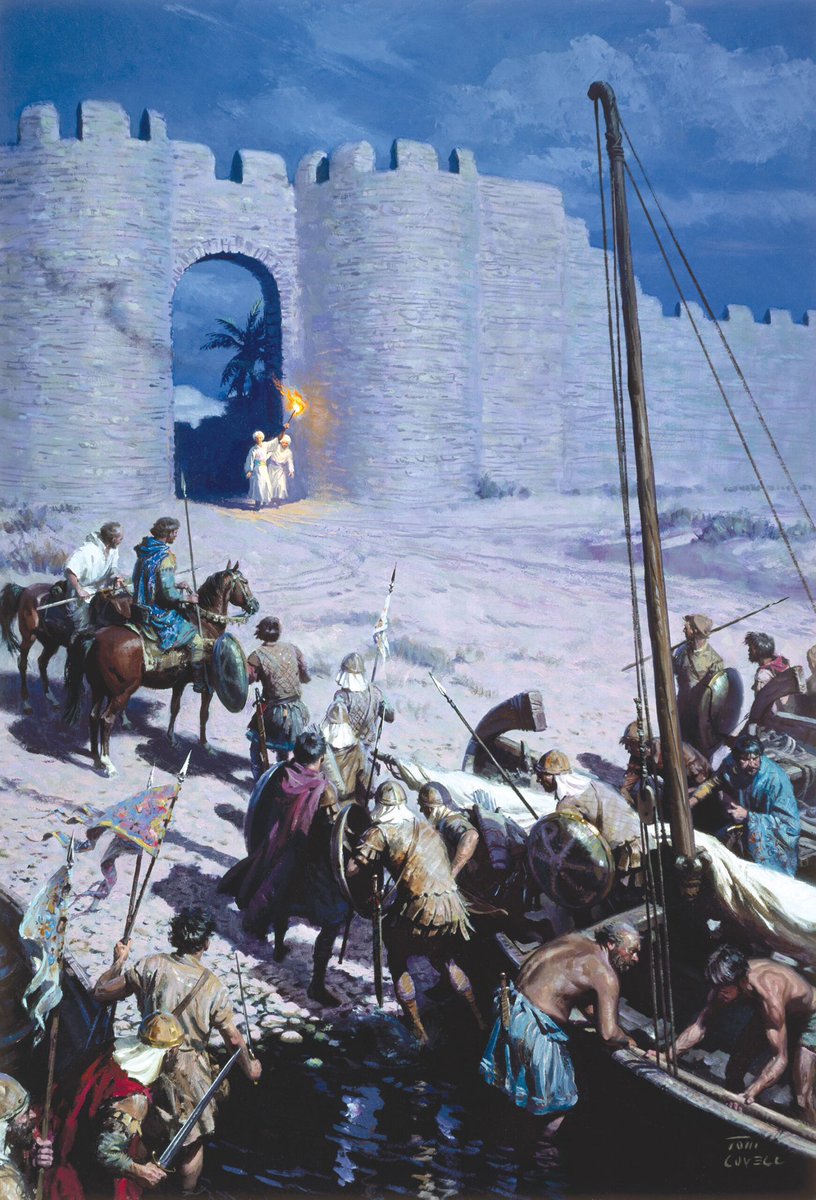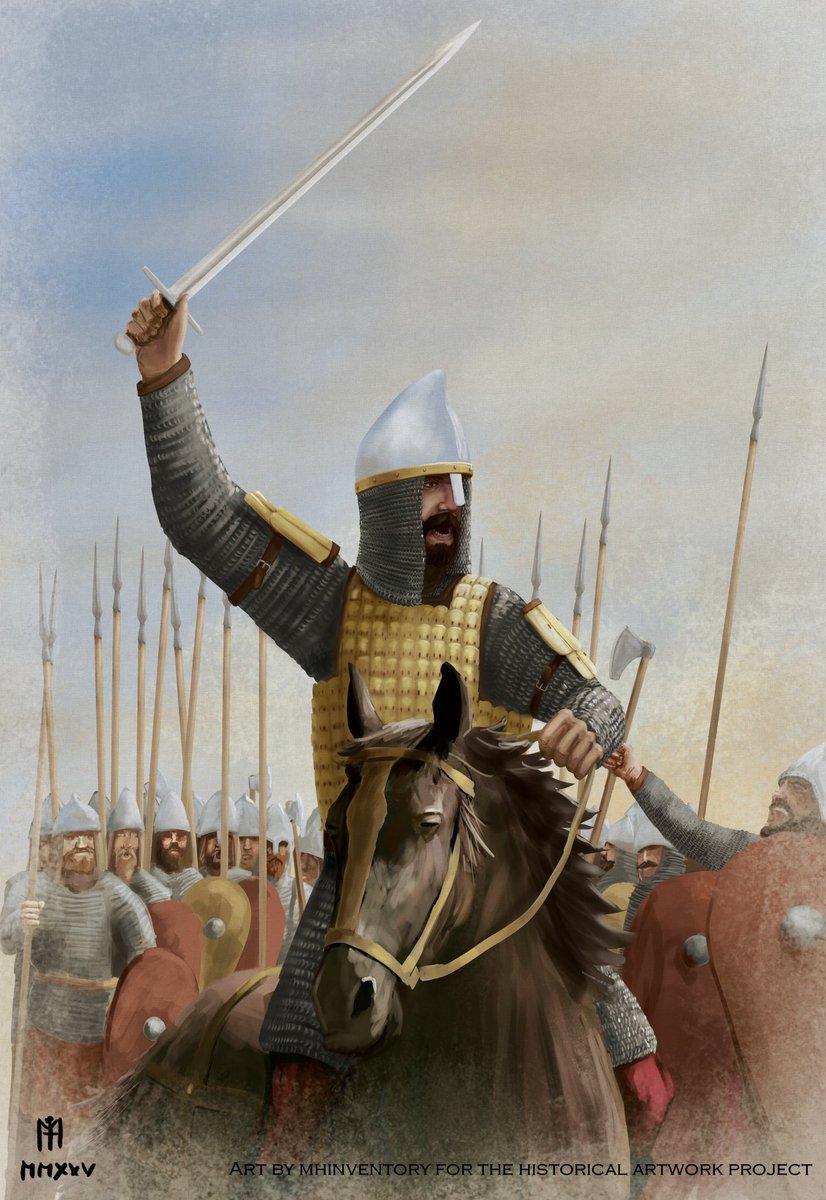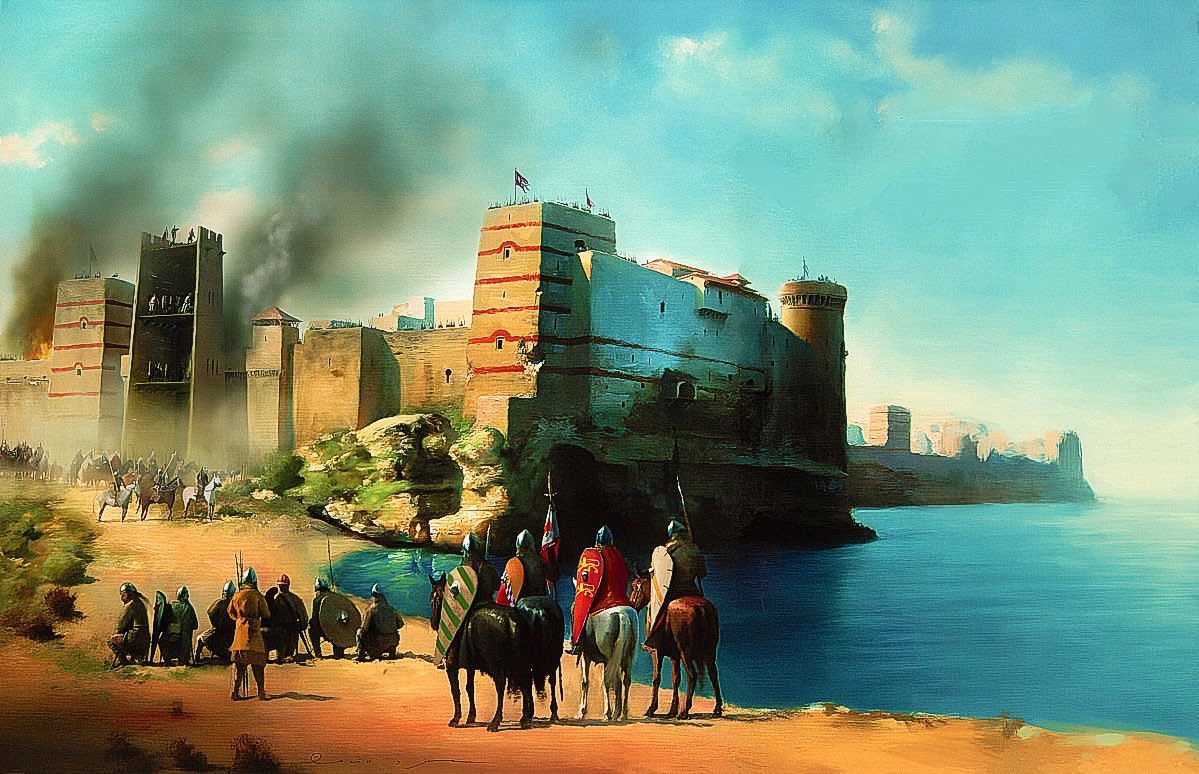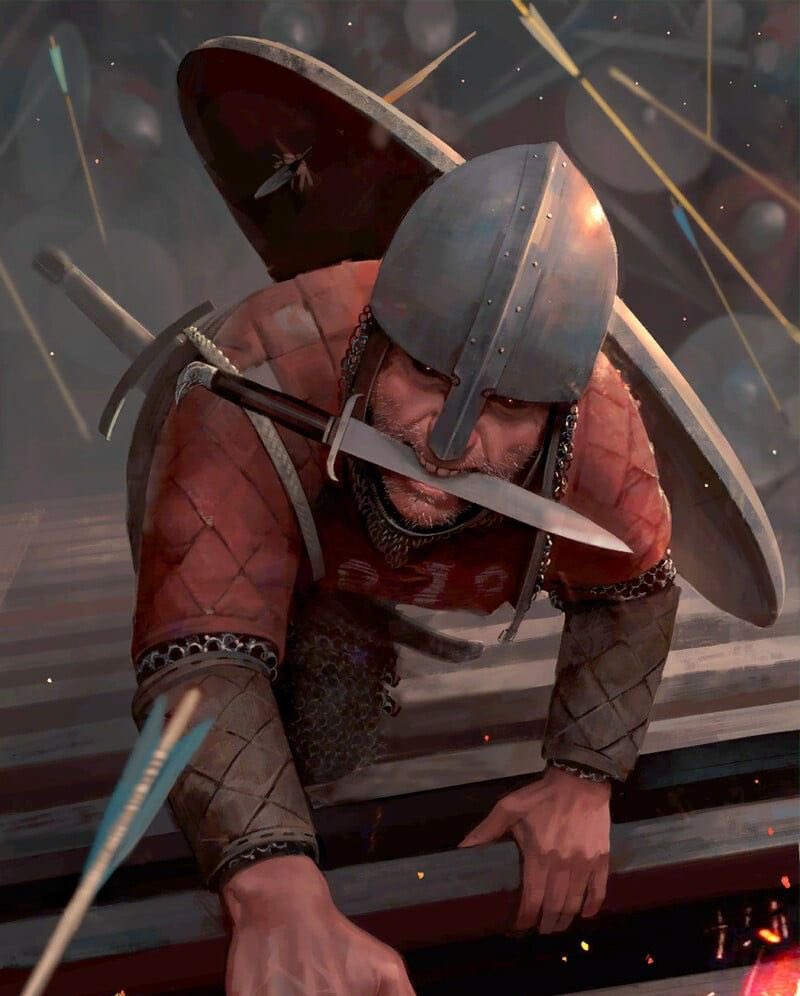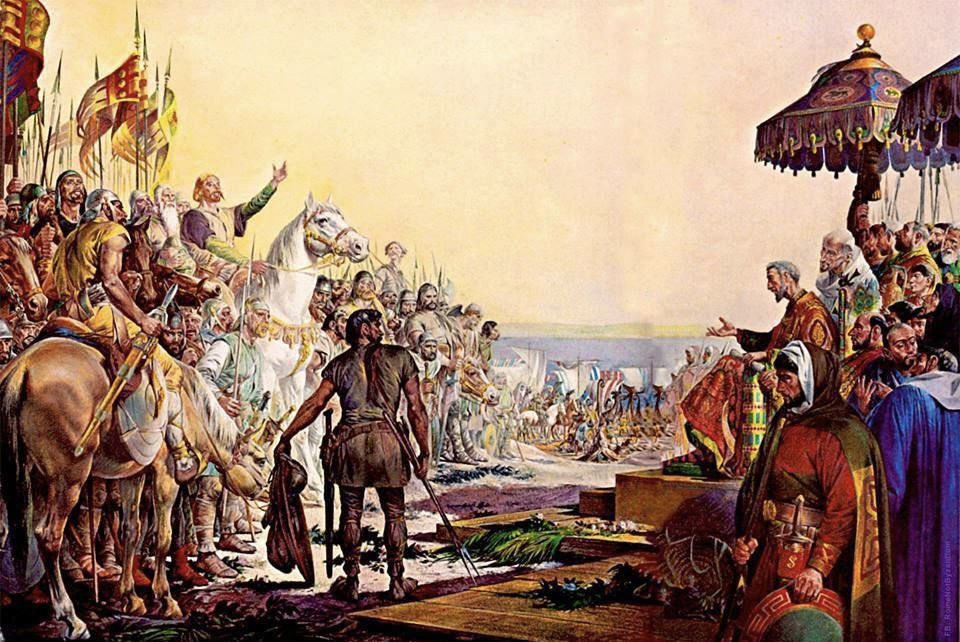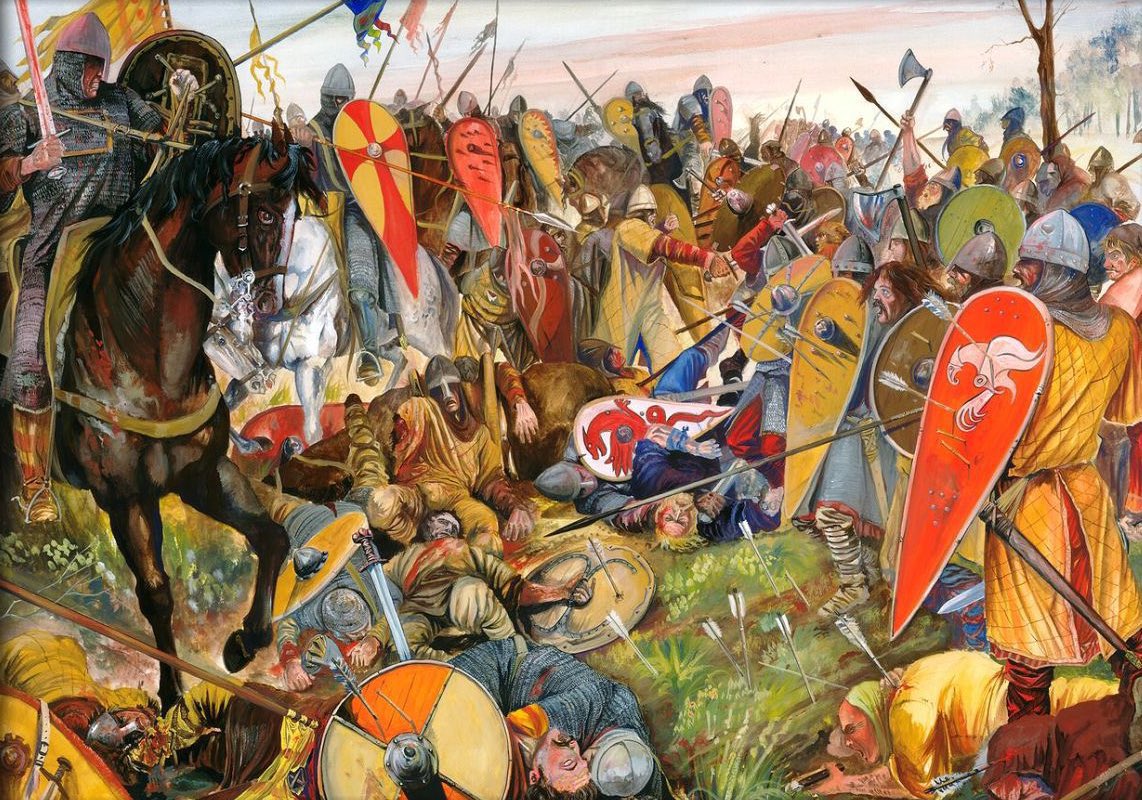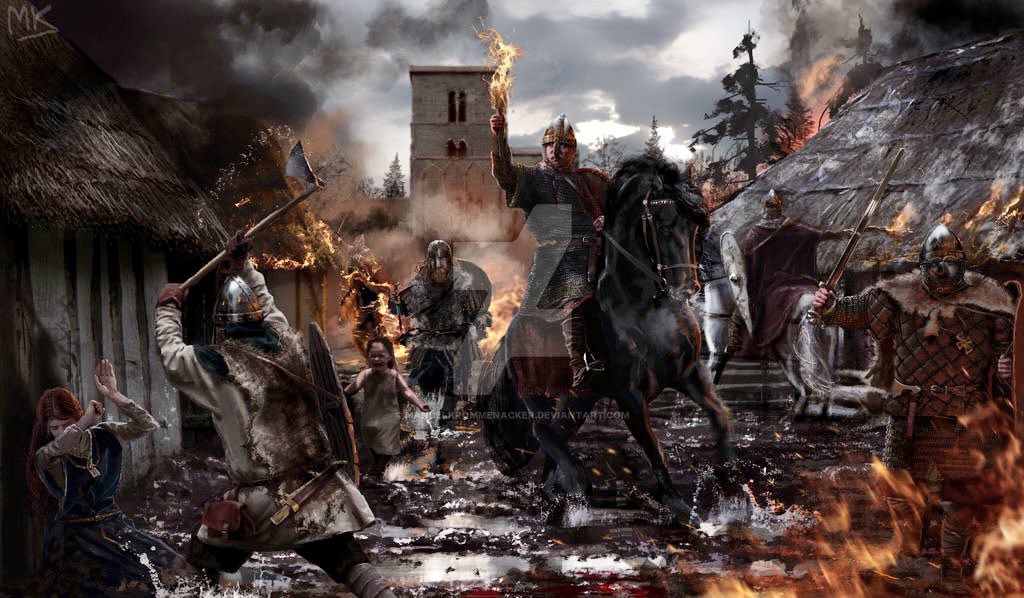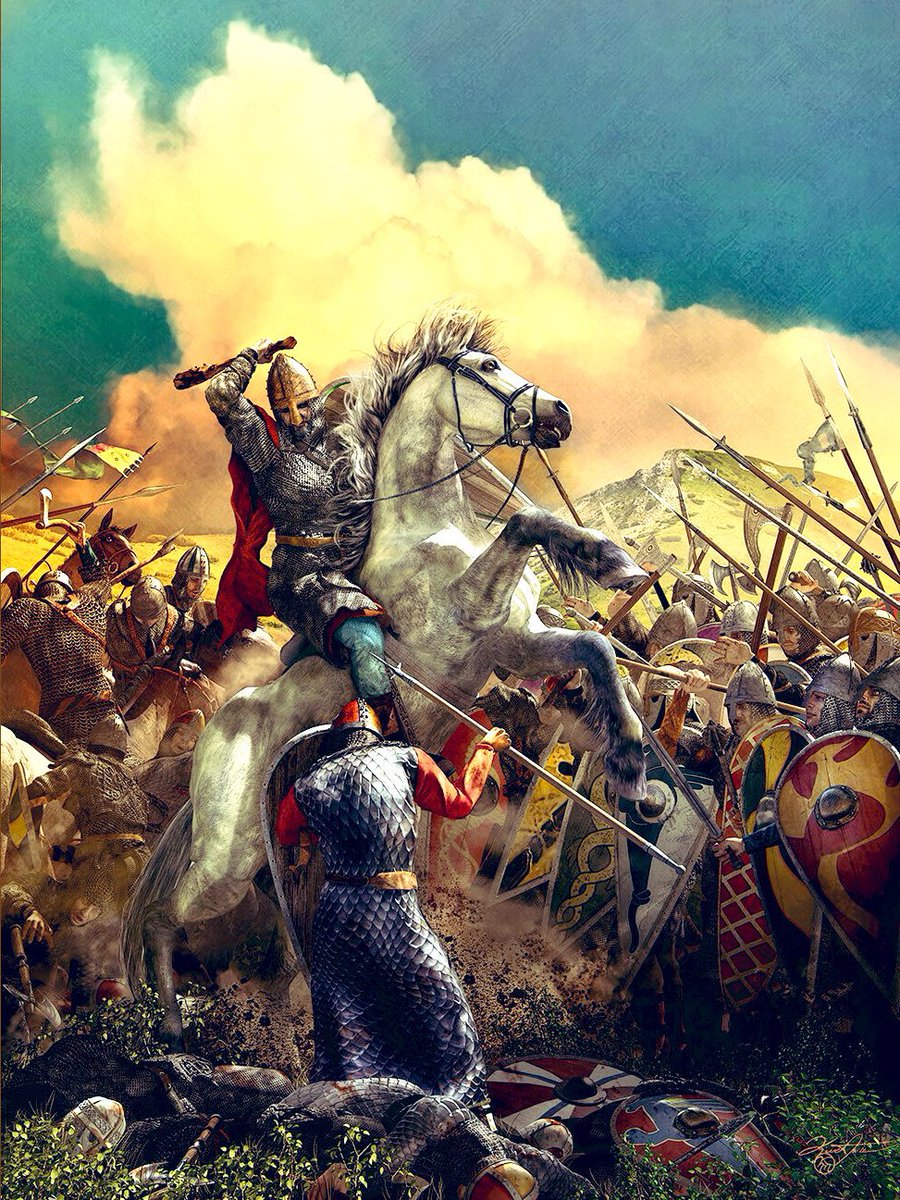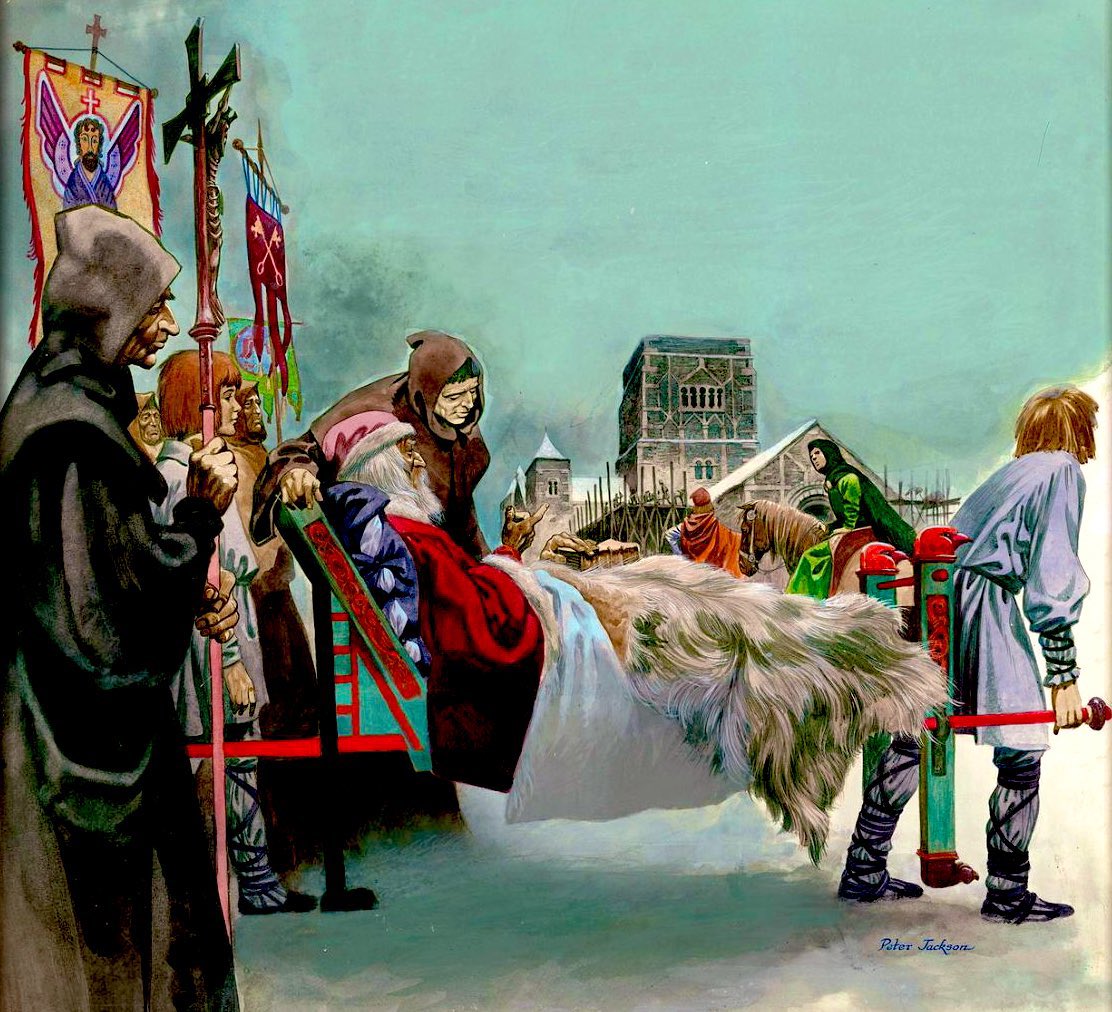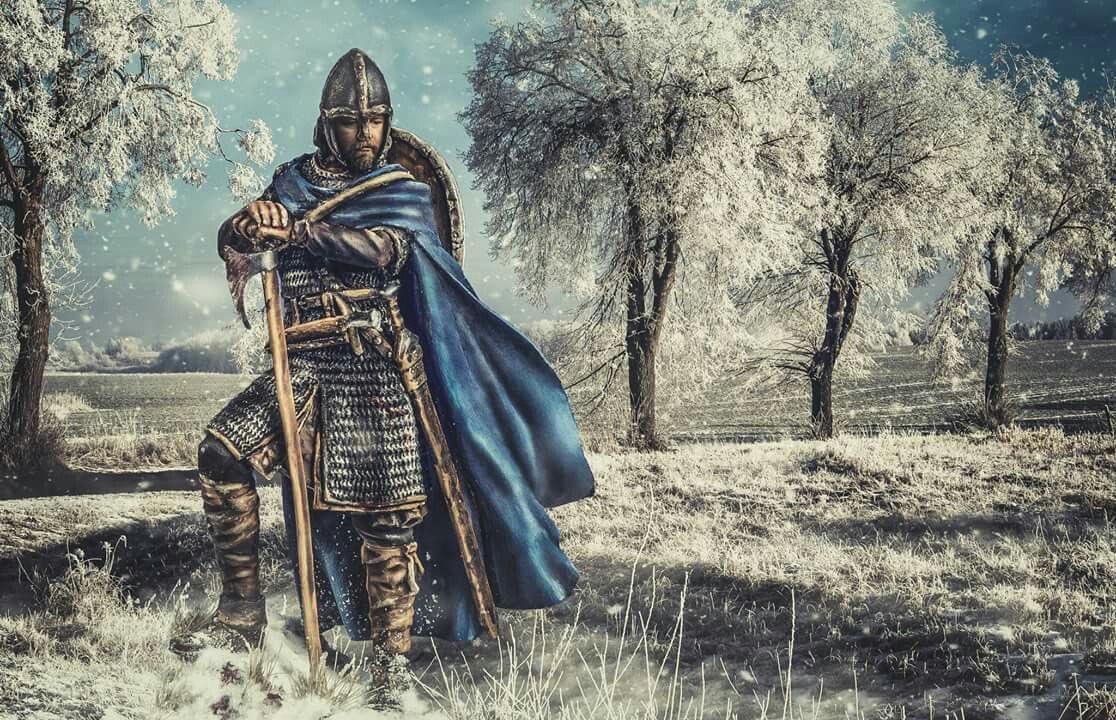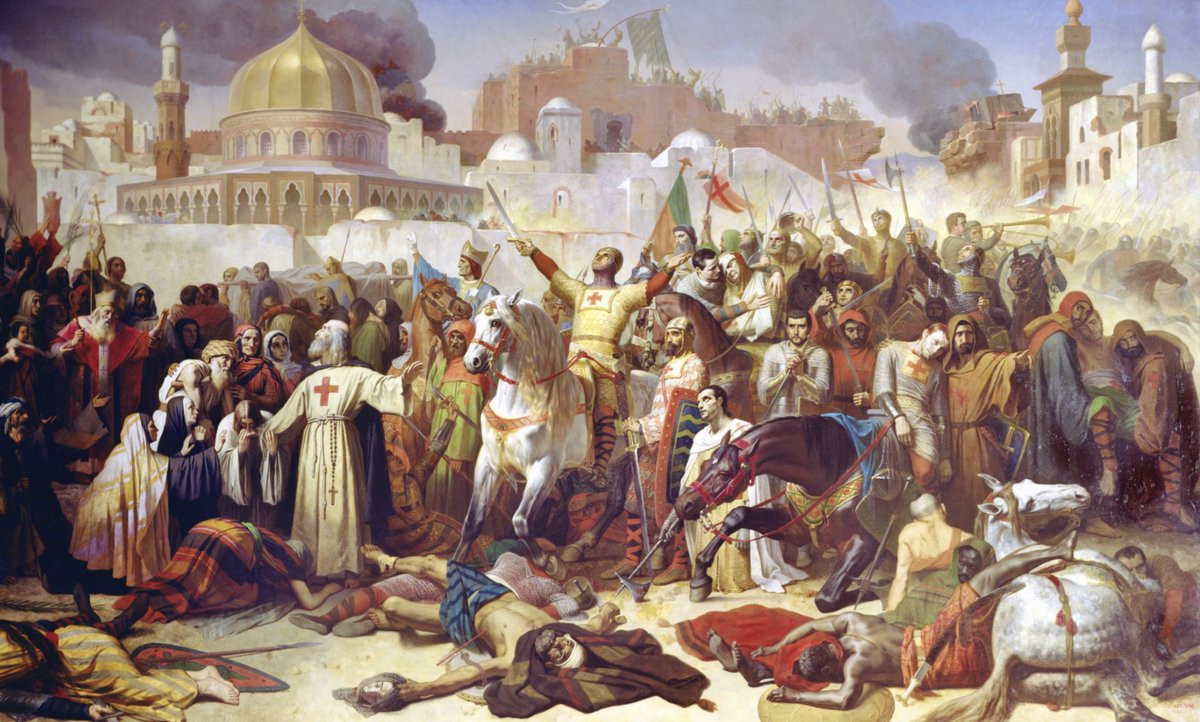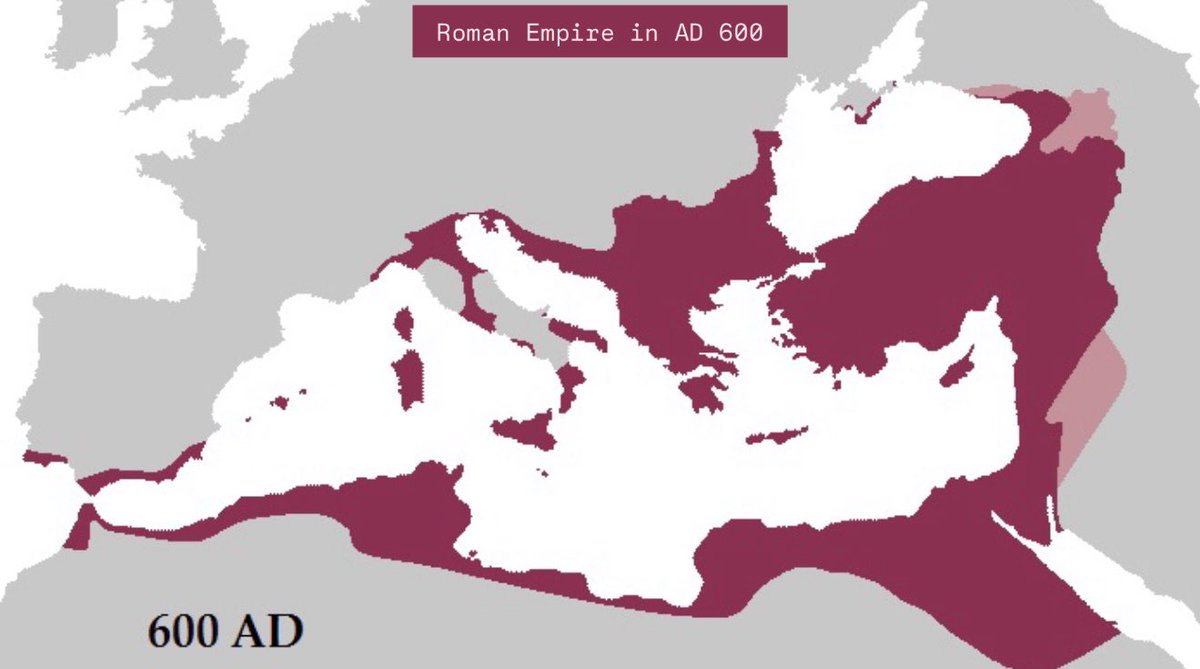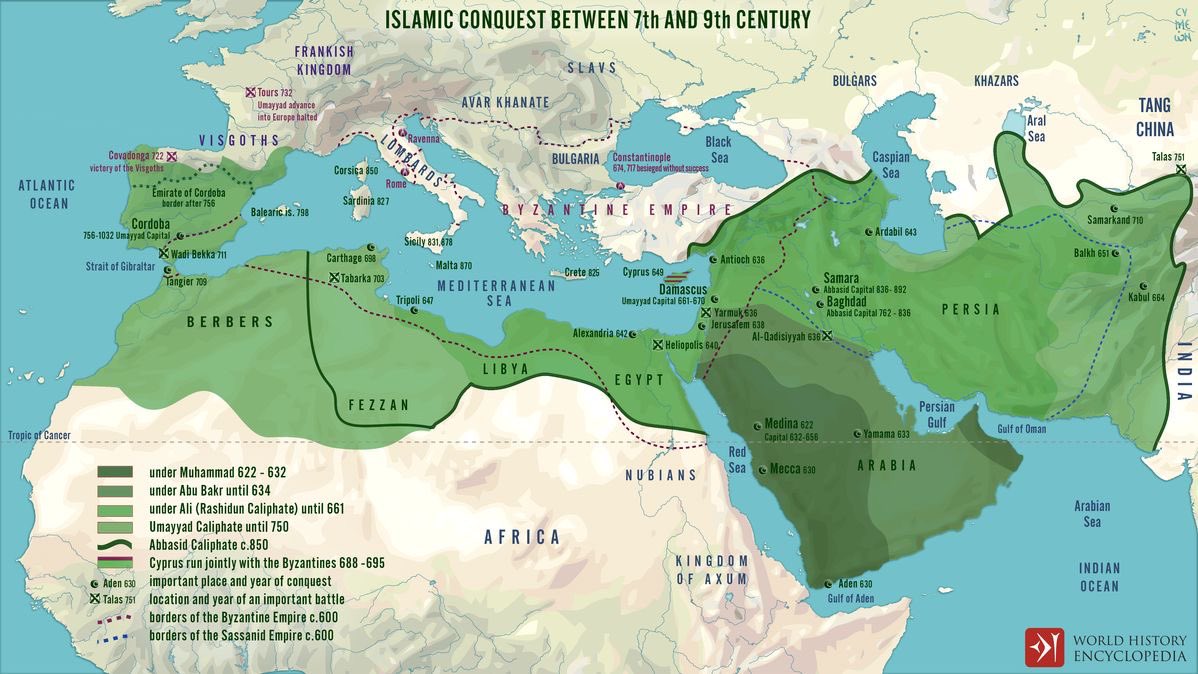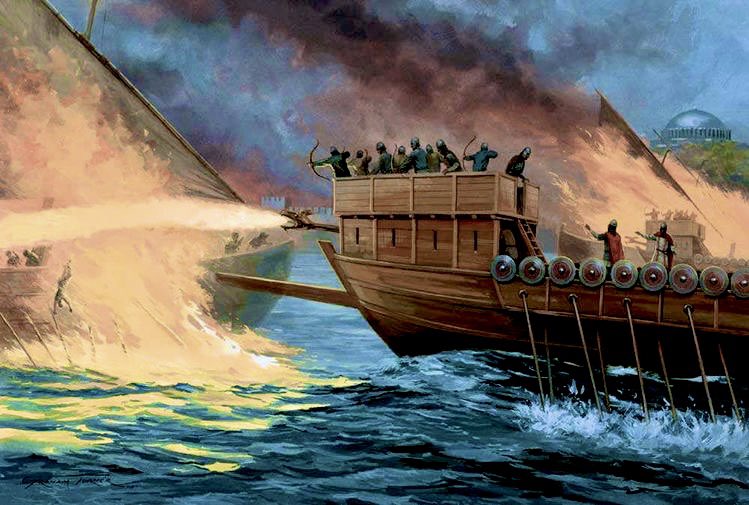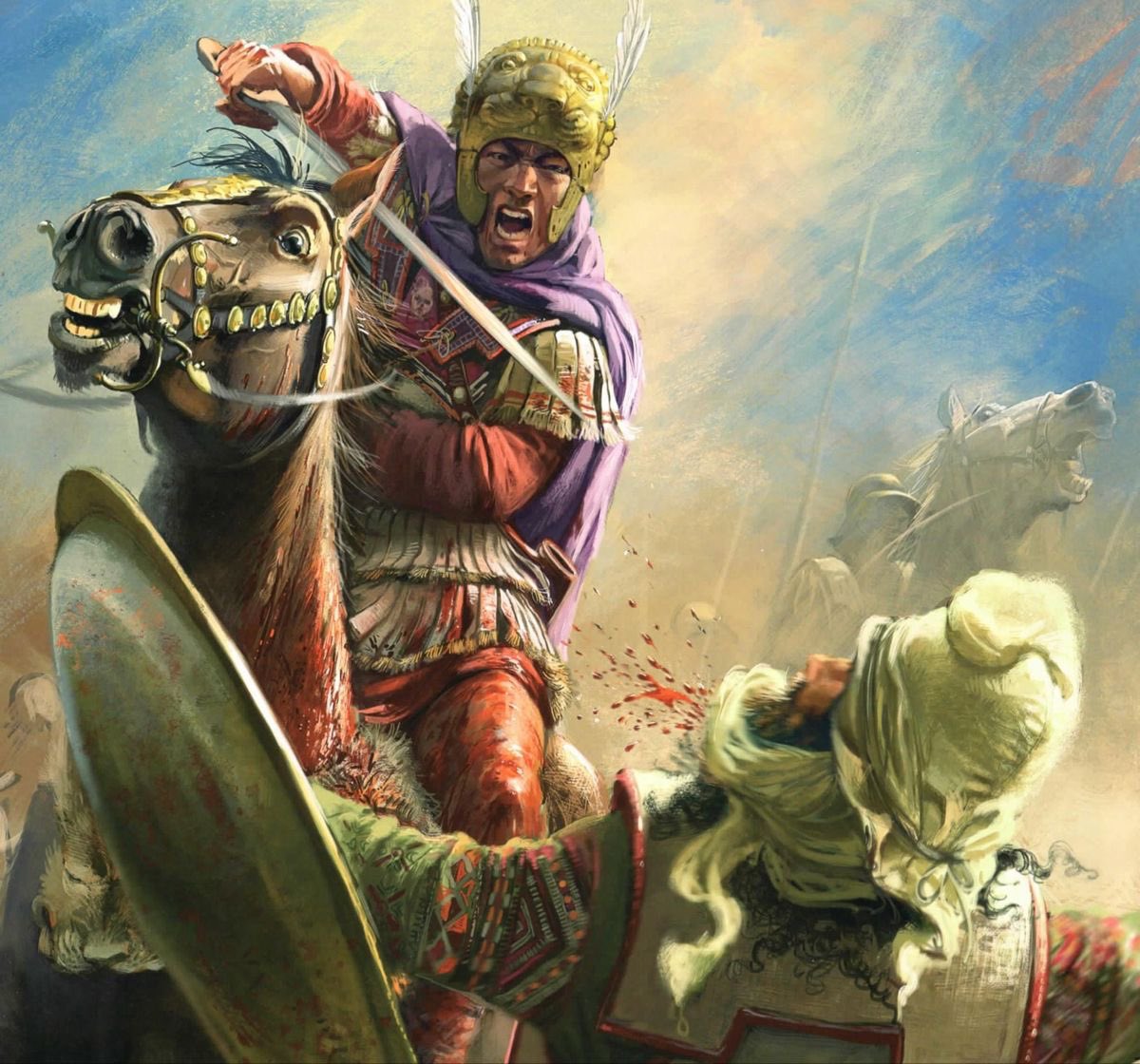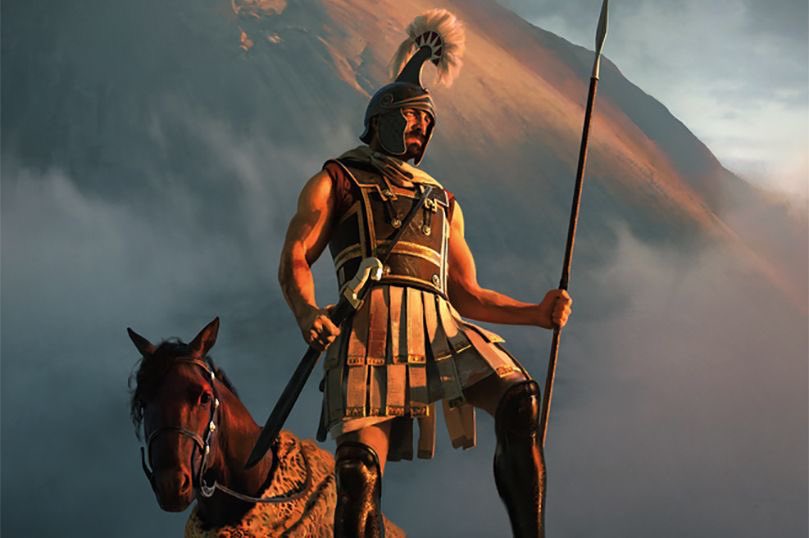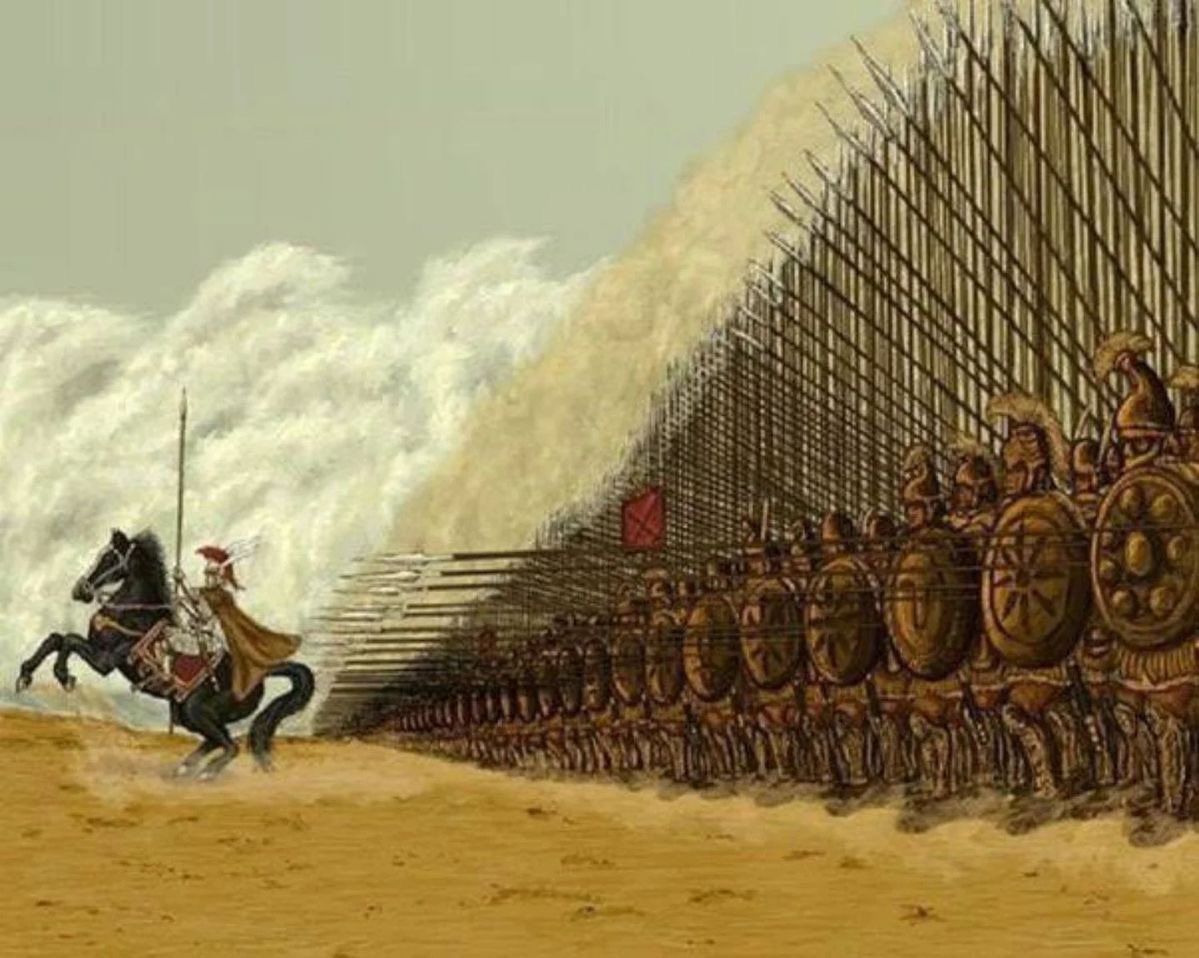Today in AD 1415,
Henry V won possibly the greatest victory ever achieved by the men of England at…
• THE BATTLE OF AGINCOURT •
[Thread]🧵
Henry V won possibly the greatest victory ever achieved by the men of England at…
• THE BATTLE OF AGINCOURT •
[Thread]🧵
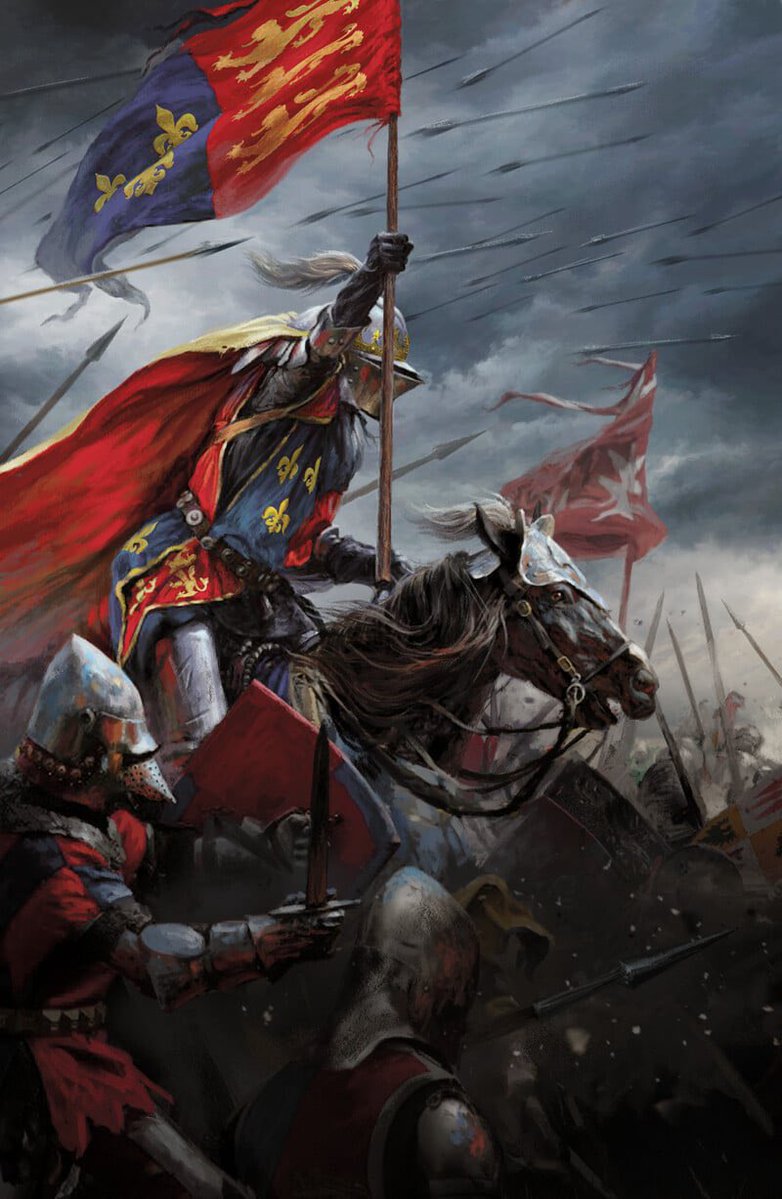
‘𝐘𝐨𝐮𝐫 𝐛𝐫𝐨𝐭𝐡𝐞𝐫 𝐤𝐢𝐧𝐠𝐬 𝐚𝐧𝐝 𝐦𝐨𝐧𝐚𝐫𝐜𝐡𝐬 𝐨𝐟 𝐭𝐡𝐞 𝐞𝐚𝐫𝐭𝐡 𝐝𝐨 𝐚𝐥𝐥 𝐞𝐱𝐩𝐞𝐜𝐭 𝐭𝐡𝐚𝐭 𝐲𝐨𝐮 𝐬𝐡𝐨𝐮𝐥𝐝 𝐫𝐨𝐮𝐬𝐞 𝐲𝐨𝐮𝐫𝐬𝐞𝐥𝐟
𝐀𝐬 𝐝𝐢𝐝 𝐭𝐡𝐞 𝐟𝐨𝐫𝐦𝐞𝐫 𝐥𝐢𝐨𝐧𝐬 𝐨𝐟 𝐲𝐨𝐮𝐫 𝐛𝐥𝐨𝐨𝐝’
By 1410 the civil war raging in France caused by the infirmity of the mad King Charles led to both sides seeking help from England.
In AD 1413 Henry V was crowned king upon the death of his father and reasserted the claim to the throne of France that stemmed from his ‘most famed of famous ancestors’ Edward III.
𝐀𝐬 𝐝𝐢𝐝 𝐭𝐡𝐞 𝐟𝐨𝐫𝐦𝐞𝐫 𝐥𝐢𝐨𝐧𝐬 𝐨𝐟 𝐲𝐨𝐮𝐫 𝐛𝐥𝐨𝐨𝐝’
By 1410 the civil war raging in France caused by the infirmity of the mad King Charles led to both sides seeking help from England.
In AD 1413 Henry V was crowned king upon the death of his father and reasserted the claim to the throne of France that stemmed from his ‘most famed of famous ancestors’ Edward III.
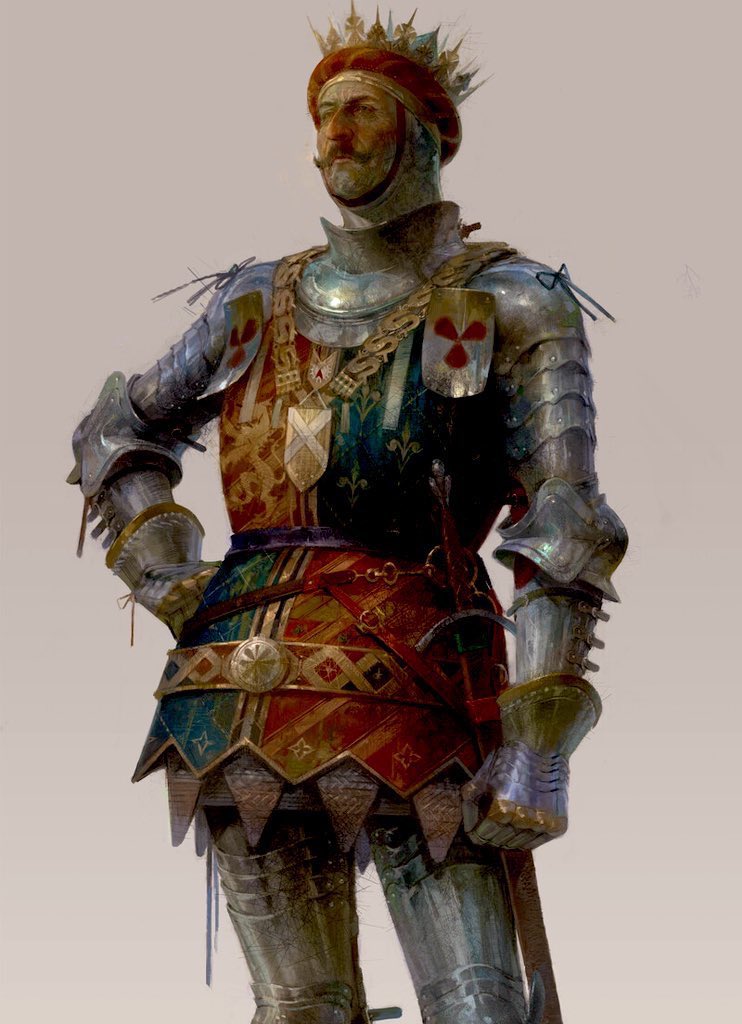
‘𝐅𝐫𝐚𝐧𝐜𝐞 𝐛𝐞𝐢𝐧𝐠 𝐨𝐮𝐫𝐬, 𝐰𝐞’𝐥𝐥 𝐛𝐞𝐧𝐝 𝐢𝐭 𝐭𝐨 𝐨𝐮𝐫 𝐚𝐰𝐞
𝐎𝐫 𝐛𝐫𝐞𝐚𝐤 𝐢𝐭 𝐚𝐥𝐥 𝐭𝐨 𝐩𝐢𝐞𝐜𝐞𝐬.’
Negotiations had failed by 1415 and Henry was resolved to invade France and won the backing of Parliament.
Henry set sail and landed in Normandy on the 13th of August with around 2,300 men-at-arms and 9,000 longbowmen.

𝐎𝐫 𝐛𝐫𝐞𝐚𝐤 𝐢𝐭 𝐚𝐥𝐥 𝐭𝐨 𝐩𝐢𝐞𝐜𝐞𝐬.’
Negotiations had failed by 1415 and Henry was resolved to invade France and won the backing of Parliament.
Henry set sail and landed in Normandy on the 13th of August with around 2,300 men-at-arms and 9,000 longbowmen.
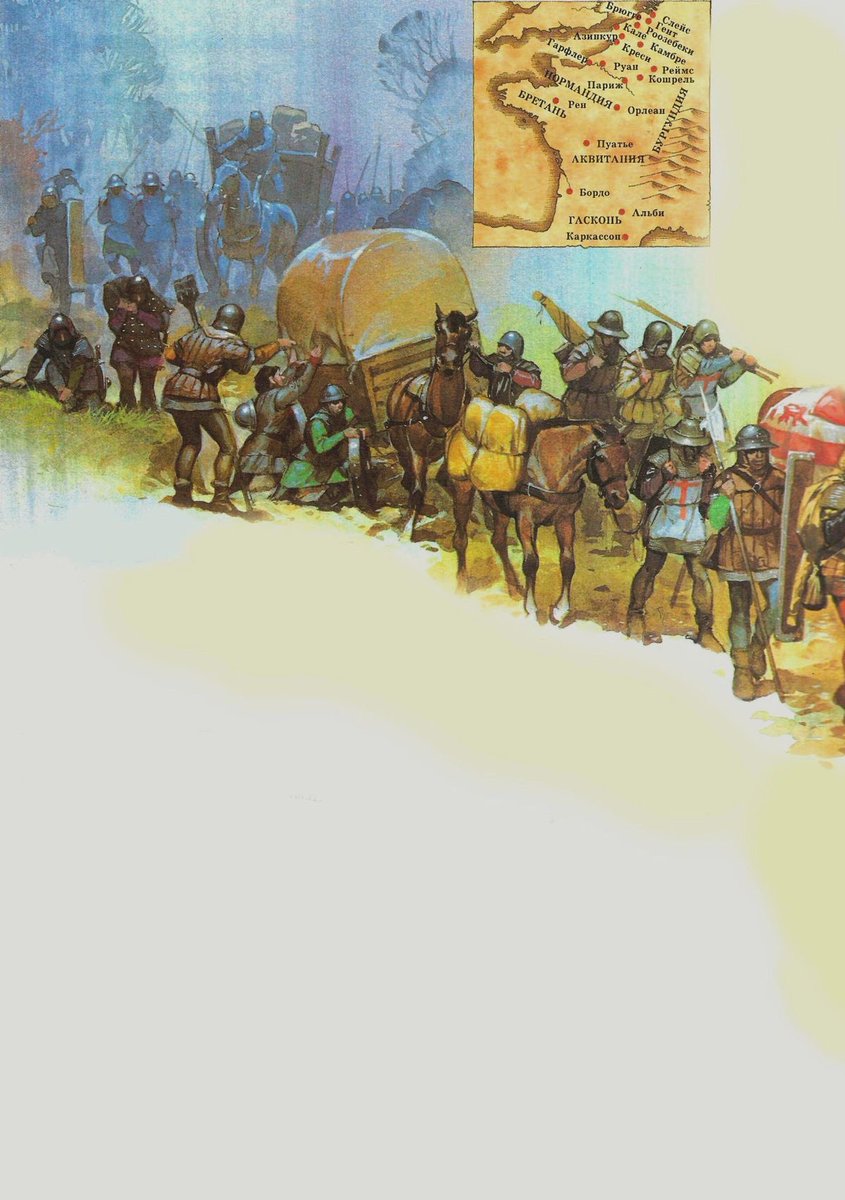
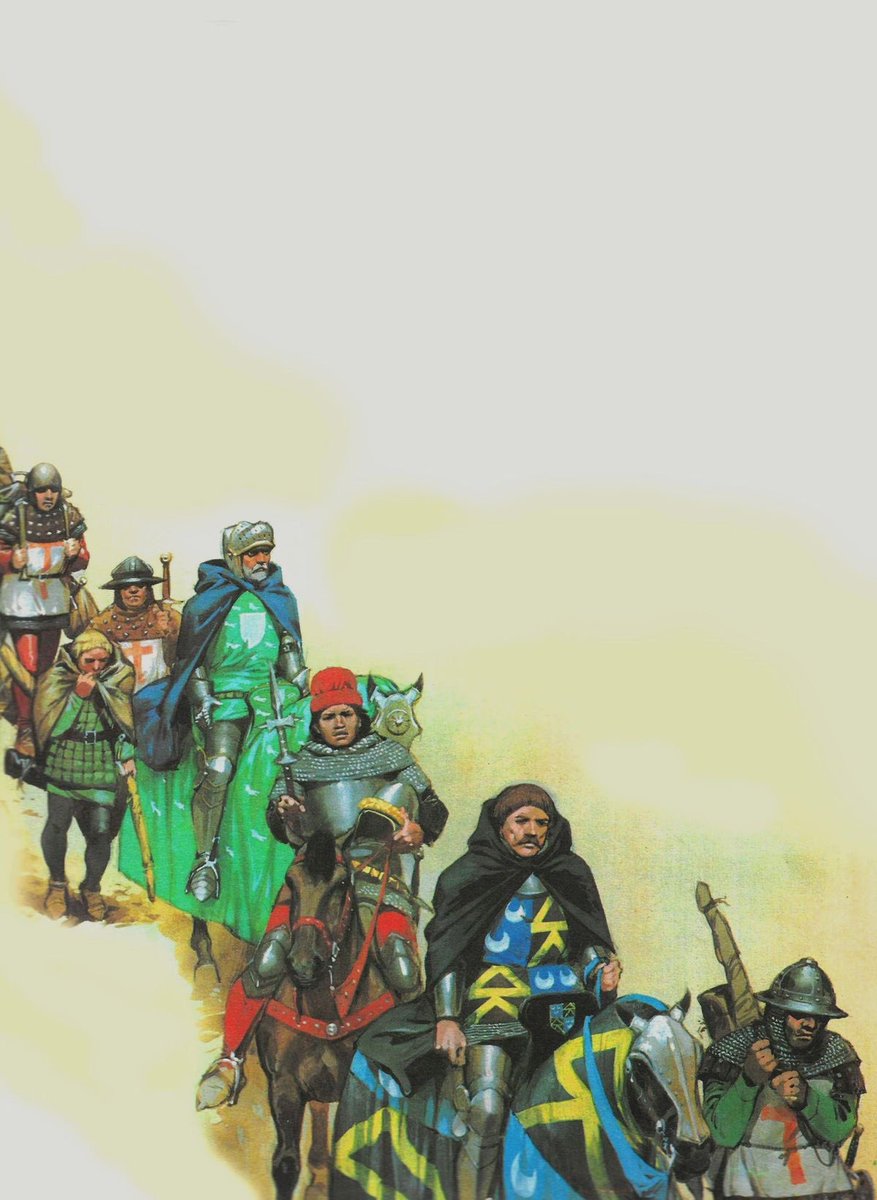
‘𝐎𝐧𝐜𝐞 𝐦𝐨𝐫𝐞 𝐮𝐧𝐭𝐨 𝐭𝐡𝐞 𝐛𝐫𝐞𝐚𝐜𝐡, 𝐝𝐞𝐚𝐫 𝐟𝐫𝐢𝐞𝐧𝐝𝐬’
On the 19th of August he laid siege to Harfleur which held out for much longer than Henry expected.
The siege weakened his army when dysentery broke out and he lost more men still when he left a garrison at Harfleur before setting out for Calais.
On the 19th of August he laid siege to Harfleur which held out for much longer than Henry expected.
The siege weakened his army when dysentery broke out and he lost more men still when he left a garrison at Harfleur before setting out for Calais.
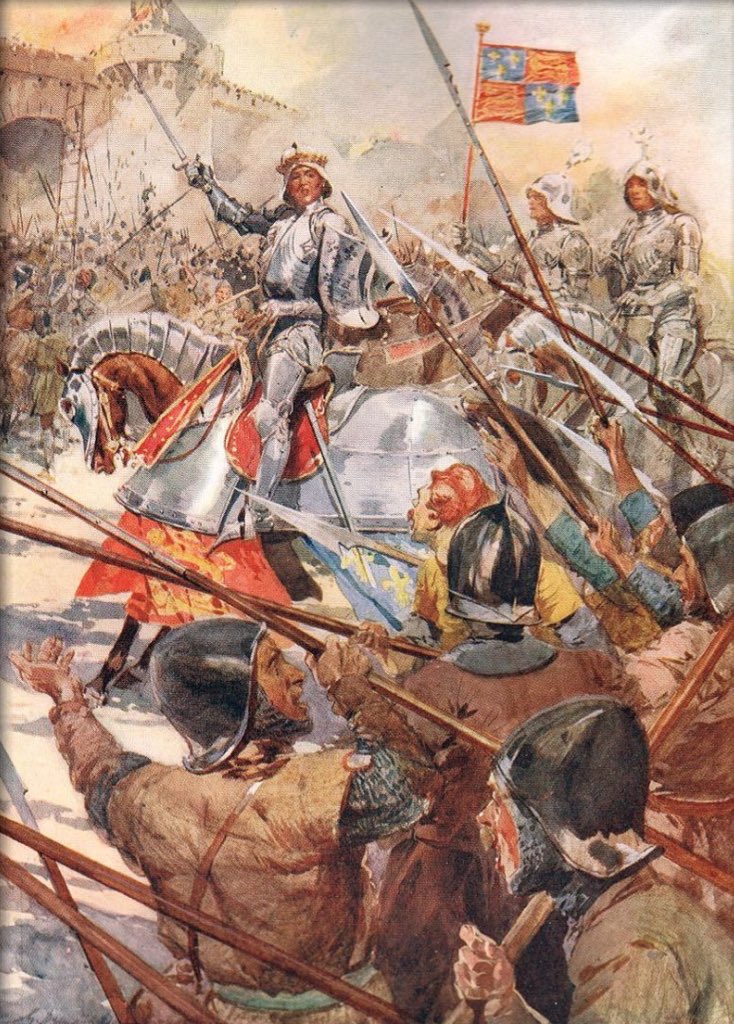
‘𝐀𝐥𝐥 𝐭𝐡𝐢𝐧𝐠𝐬 𝐚𝐫𝐞 𝐫𝐞𝐚𝐝𝐲, 𝐢𝐟 𝐨𝐮𝐫 𝐦𝐢𝐧𝐝 𝐛𝐞 𝐬𝐨’
The French manoeuvred to block Henry’s crossing of the Somme, and Henry’s smaller force of around 8,500 men was being shadowed by the much larger French force of around 15,000 while the French were still trying to recruit yet more men from nearby lords.
On the 24th of October the two forces camped near each other, and the French tried to negotiate to stall for time while they recruited more men.
Henry knew he couldn’t wait while the French army grew in size and advanced to battle on the next day!
The French manoeuvred to block Henry’s crossing of the Somme, and Henry’s smaller force of around 8,500 men was being shadowed by the much larger French force of around 15,000 while the French were still trying to recruit yet more men from nearby lords.
On the 24th of October the two forces camped near each other, and the French tried to negotiate to stall for time while they recruited more men.
Henry knew he couldn’t wait while the French army grew in size and advanced to battle on the next day!
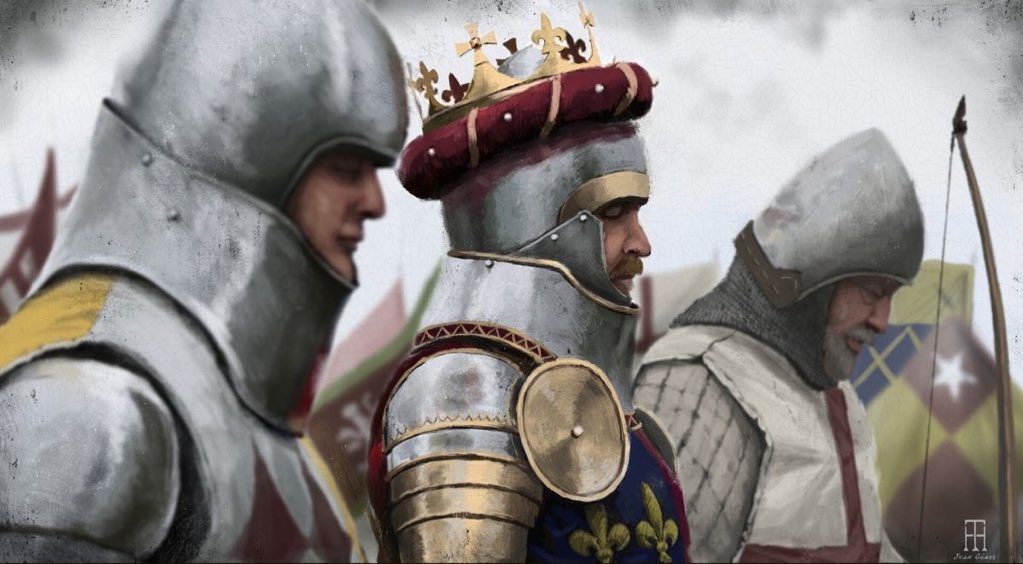
‘𝐆𝐨𝐝’𝐬 𝐚𝐫𝐦 𝐬𝐭𝐫𝐢𝐤𝐞 𝐰𝐢𝐭𝐡 𝐮𝐬! '𝐓𝐢𝐬 𝐚 𝐟𝐞𝐚𝐫𝐟𝐮𝐥 𝐨𝐝𝐝𝐬’
Henry deployed his 1,500 men-at-arms in three groups in a defile between two woods with one group led by himself, another by his cousin Edward, Duke of York, and the third by Thomas Camoys.
On either side of the men-at-arms, he split his 7,000 bowmen led by Sir Thomas Erpingham. The position of the bowmen was protected sharpened stakes.
Henry would greatly benefit by the torrential rain that had soaked the muddy field of Agincourt.
Henry deployed his 1,500 men-at-arms in three groups in a defile between two woods with one group led by himself, another by his cousin Edward, Duke of York, and the third by Thomas Camoys.
On either side of the men-at-arms, he split his 7,000 bowmen led by Sir Thomas Erpingham. The position of the bowmen was protected sharpened stakes.
Henry would greatly benefit by the torrential rain that had soaked the muddy field of Agincourt.
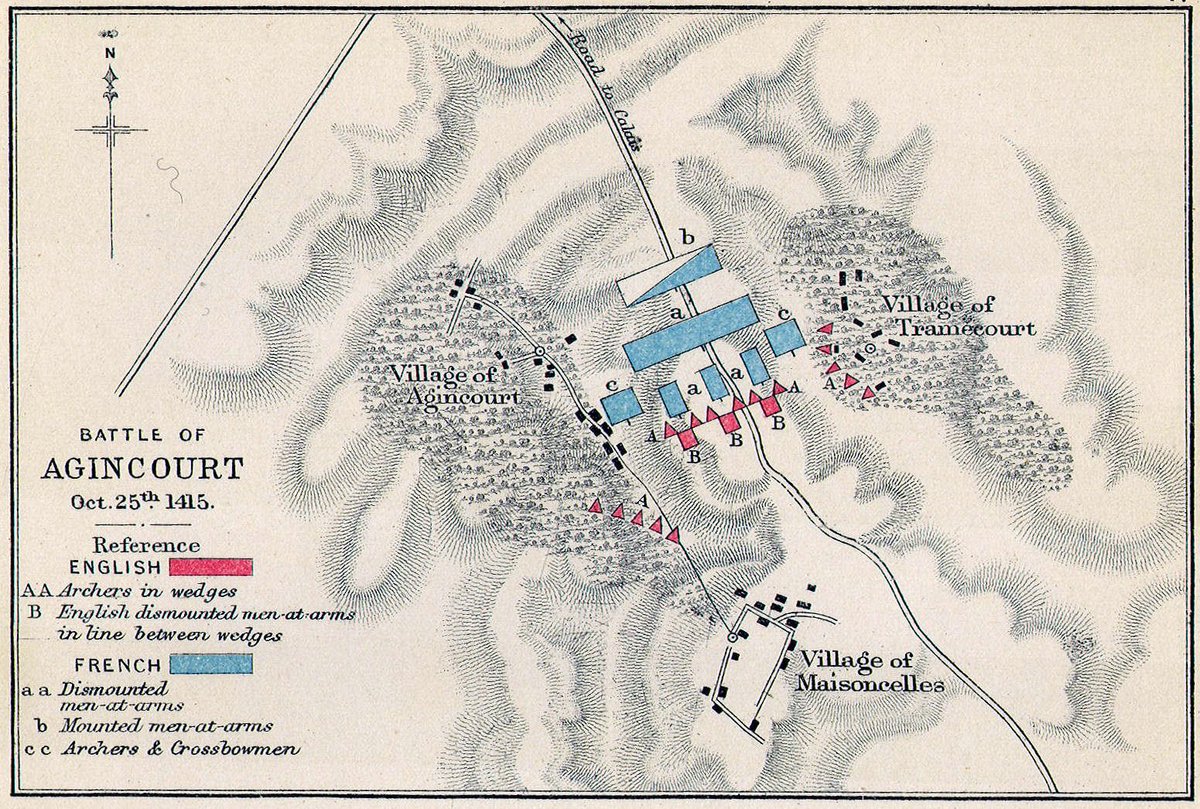
‘𝐓𝐨𝐝𝐚𝐲 𝐢𝐬 𝐭𝐡𝐞 𝐅𝐞𝐚𝐬𝐭 𝐨𝐟 𝐂𝐫𝐢𝐬𝐩𝐢𝐚𝐧’
After hours of inaction and re-deployment the French charged the English archers and met stiff resistance.
The French knights didn’t charge at their full strength - perhaps their haste was to try and catch the archers mid-deployment - and when they reached the archers they were kept at bay by the defensive stakes!
It is unclear exactly what damage the arrows could do to the best armed of the French knights but at the very least, their horses were wounded!
The knights’ charge and retreat had the effect of churning up the soaking wet soil beneath them, strengthening the position of the archers even more.
After hours of inaction and re-deployment the French charged the English archers and met stiff resistance.
The French knights didn’t charge at their full strength - perhaps their haste was to try and catch the archers mid-deployment - and when they reached the archers they were kept at bay by the defensive stakes!
It is unclear exactly what damage the arrows could do to the best armed of the French knights but at the very least, their horses were wounded!
The knights’ charge and retreat had the effect of churning up the soaking wet soil beneath them, strengthening the position of the archers even more.
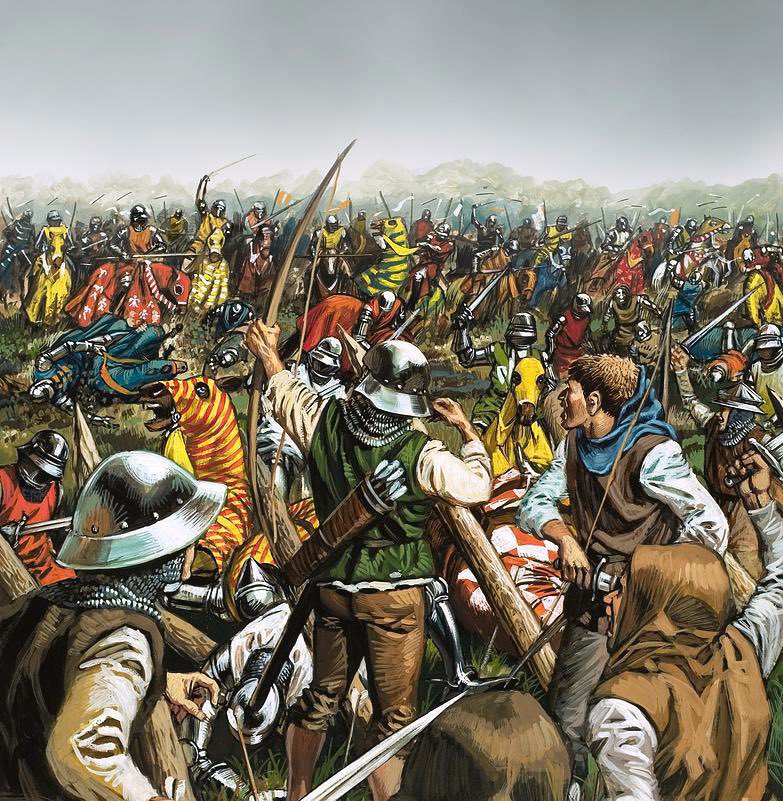
‘𝐋𝐞𝐭 𝐮𝐬 𝐝𝐢𝐞. 𝐈𝐧 𝐨𝐧𝐜𝐞 𝐦𝐨𝐫𝐞! 𝐁𝐚𝐜𝐤 𝐚𝐠𝐚𝐢𝐧’
Next came the main French assault through the muddy field and the French were again met with a hail of arrows.
When they finally reached the lines of English men-at-arms, they managed to push it back but were subsequently shot at point range on their flanks by the English archers!
Next came the main French assault through the muddy field and the French were again met with a hail of arrows.
When they finally reached the lines of English men-at-arms, they managed to push it back but were subsequently shot at point range on their flanks by the English archers!
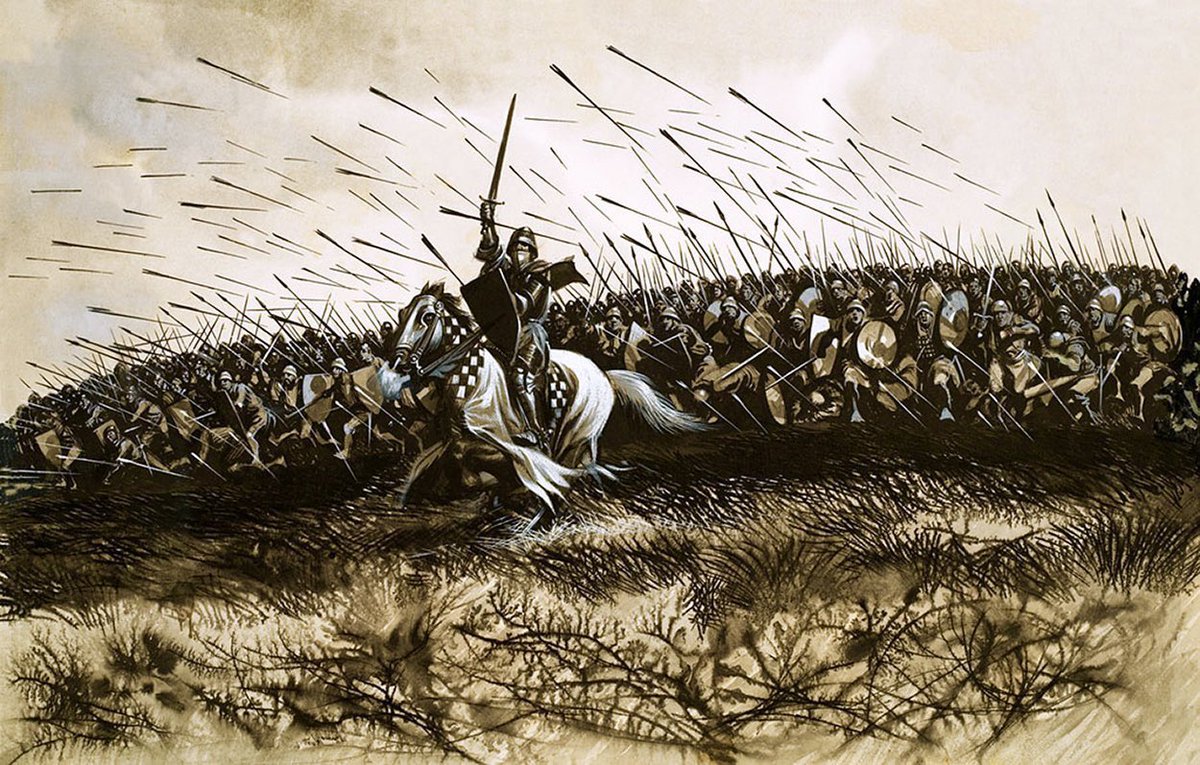
‘𝐓𝐡𝐞 𝐝𝐞𝐯𝐢𝐥 𝐭𝐚𝐤𝐞 𝐨𝐫𝐝𝐞𝐫 𝐧𝐨𝐰! 𝐈’𝐥𝐥 𝐭𝐨 𝐭𝐡𝐞 𝐭𝐡𝐫𝐨𝐧𝐠. 𝐋𝐞𝐭 𝐥𝐢𝐟𝐞 𝐛𝐞 𝐬𝐡𝐨𝐫𝐭, 𝐞𝐥𝐬𝐞 𝐬𝐡𝐚𝐦𝐞 𝐰𝐢𝐥𝐥 𝐛𝐞 𝐭𝐨𝐨 𝐥𝐨𝐧𝐠’
When they ran out of arrows, the famed longbowmen of England and Wales charged the French on both flanks with hatchets, swords and daggers, and even the mallets they had used to drive their steaks into the ground!
The bowmen were lightly armoured and could more adeptly move through the churned up field of mud and blood as they assailed the heavily armoured French.
When they ran out of arrows, the famed longbowmen of England and Wales charged the French on both flanks with hatchets, swords and daggers, and even the mallets they had used to drive their steaks into the ground!
The bowmen were lightly armoured and could more adeptly move through the churned up field of mud and blood as they assailed the heavily armoured French.

‘𝐌𝐨𝐫𝐭 𝐝𝐞 𝐦𝐚 𝐯𝐢𝐞, 𝐚𝐥𝐥 𝐢𝐬 𝐜𝐨𝐧𝐟𝐨𝐮𝐧𝐝𝐞𝐝, 𝐚𝐥𝐥’
The French became increasingly hemmed in as they were attacked from the front and on both flanks.
The French at the rear pushed into the back of their comrades to reach the fighting and only added to the crush!
They were stuck! Exhausted by the fighting which was exacerbated by the weight of their arms and armour as they battle raged on!
At one point, Henry’s youngest brother Humphrey was wounded and Henry rushed in person to stand over his body with his household men, fighting off the French while his brother could be carried off the safety!
The French became increasingly hemmed in as they were attacked from the front and on both flanks.
The French at the rear pushed into the back of their comrades to reach the fighting and only added to the crush!
They were stuck! Exhausted by the fighting which was exacerbated by the weight of their arms and armour as they battle raged on!
At one point, Henry’s youngest brother Humphrey was wounded and Henry rushed in person to stand over his body with his household men, fighting off the French while his brother could be carried off the safety!
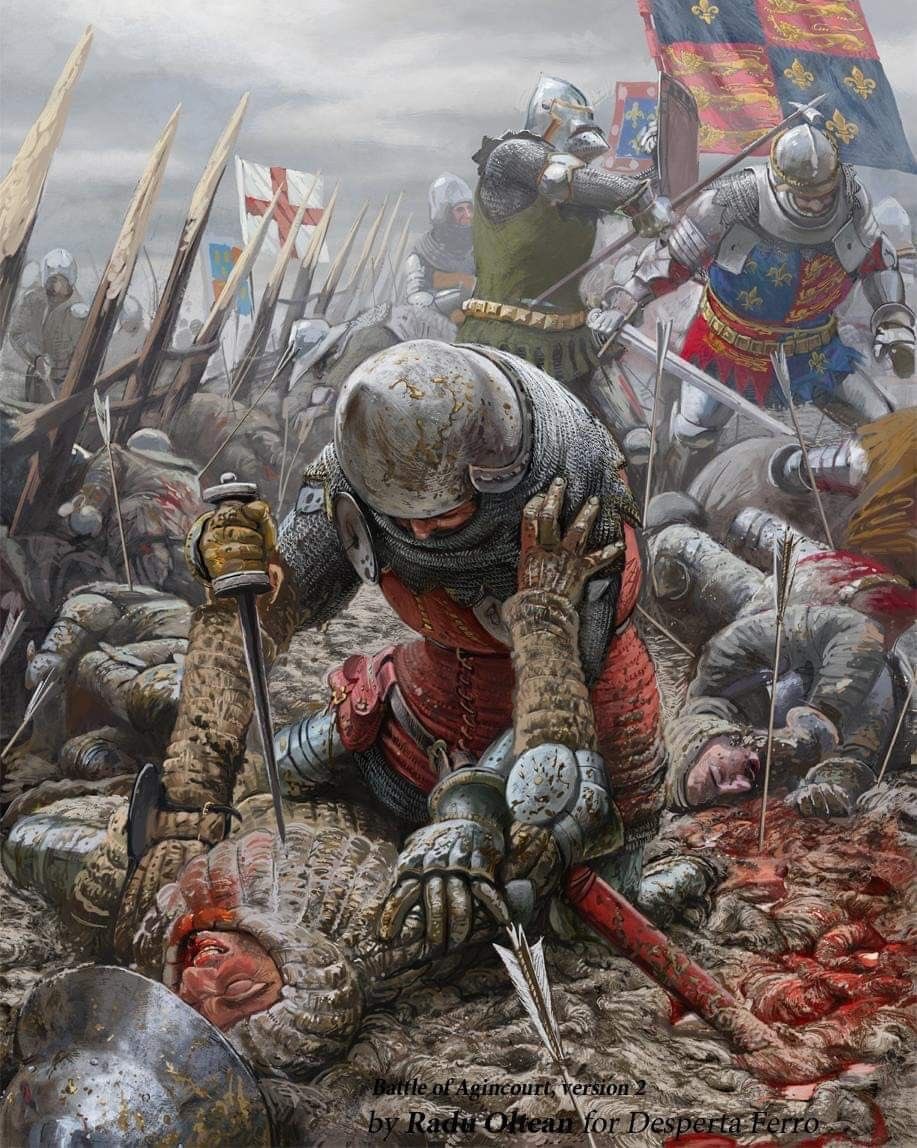
‘𝐓𝐢𝐬 𝐜𝐞𝐫𝐭𝐚𝐢𝐧 𝐭𝐡𝐞𝐫𝐞’𝐬 𝐧𝐨𝐭 𝐚 𝐛𝐨𝐲 𝐥𝐞𝐟𝐭 𝐚𝐥𝐢𝐯𝐞’
Henry came to think that the French were regrouping for another assault by their rearguard, and that the captured French, who outnumbered their captors, would join them. Henry ordered all but the most senior prisoners be killed!
With the French fought off and the prisoners cowed, the battle was over.
Around 6,000 French fighting men were killed including 100 lords and other prominent figures. Estimates of those captured are between 700-2,200.
Henry came to think that the French were regrouping for another assault by their rearguard, and that the captured French, who outnumbered their captors, would join them. Henry ordered all but the most senior prisoners be killed!
With the French fought off and the prisoners cowed, the battle was over.
Around 6,000 French fighting men were killed including 100 lords and other prominent figures. Estimates of those captured are between 700-2,200.
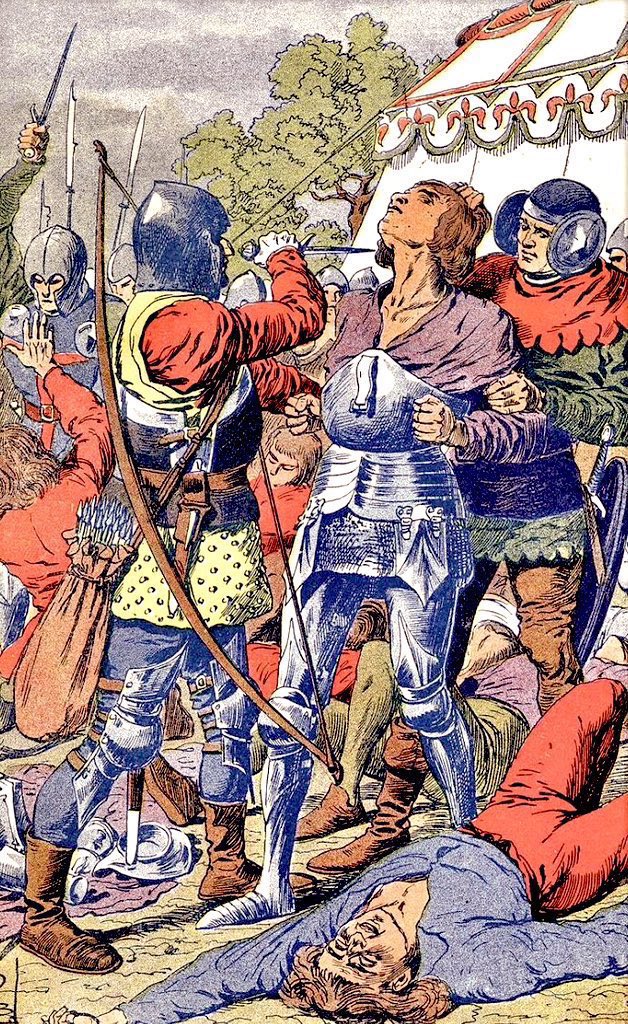
‘𝐖𝐞𝐥𝐥 𝐡𝐚𝐯𝐞 𝐰𝐞 𝐝𝐨𝐧𝐞, 𝐭𝐡𝐫𝐢𝐜𝐞-𝐯𝐚𝐥𝐢𝐚𝐧𝐭 𝐜𝐨𝐮𝐧𝐭𝐫𝐲𝐦𝐞𝐧!’
In the aftermath of the battle the French were in disarray and the truce between the factions in their civil war broke down. Henry initially returned to England to celebrate his victory but invaded Normandy in 1417.
In the aftermath of the battle the French were in disarray and the truce between the factions in their civil war broke down. Henry initially returned to England to celebrate his victory but invaded Normandy in 1417.
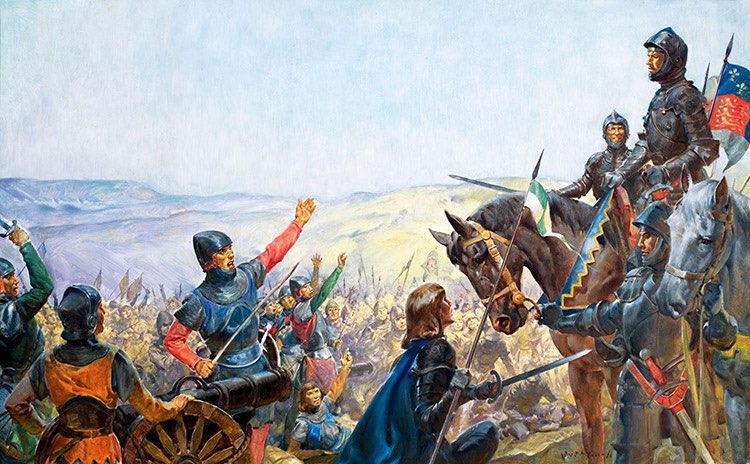
Thank you for reading this far.
All quotes in the thread are from Shakespeare’s Henry V.
If you enjoyed this thread and want to know what happened next, I have another which is a timeline of the entire Hundred Years War that you might like
All quotes in the thread are from Shakespeare’s Henry V.
If you enjoyed this thread and want to know what happened next, I have another which is a timeline of the entire Hundred Years War that you might like
https://twitter.com/nonregemesse/status/1972392999503175687
• • •
Missing some Tweet in this thread? You can try to
force a refresh


